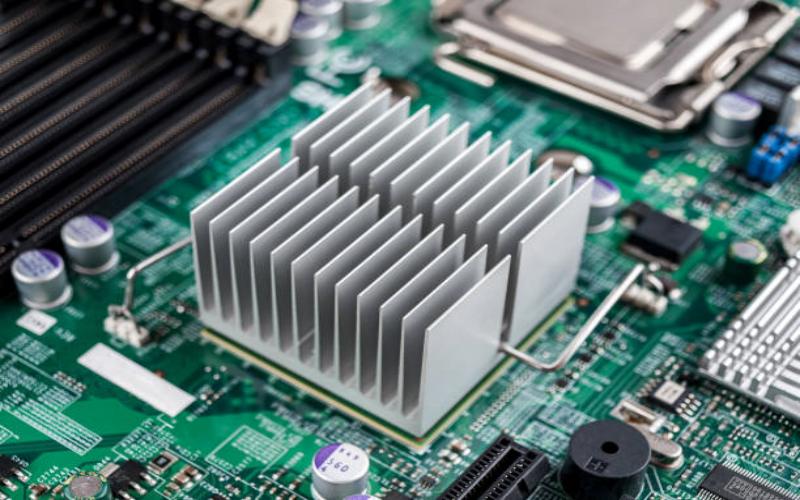Heat sink materials: Aluminum vs. Copper
When it comes to heat sink materials, two popular options are aluminum and copper. Both materials have their own strengths and weaknesses, making them suitable for different applications. In this article, we will explore the key differences between aluminum and copper heat sink materials, and discuss their advantages and disadvantages.
1. Thermal Conductivity: Aluminum's Advantage
Thermal conductivity is a crucial factor to consider when choosing a heat sink material. It determines how efficiently the heat is transferred from the heat source to the surrounding environment. In this aspect, copper has long been considered the gold standard with a thermal conductivity of around 401 W/mK. However, aluminum is not far behind with a thermal conductivity of approximately 205 W/mK. While copper has a slight advantage, aluminum's thermal conductivity is still impressive, making it a popular choice for many applications.
2. Weight: Aluminum's Lightness
Another important consideration when selecting a heat sink material is weight. Aluminum is significantly lighter than copper, weighing only around one-third of copper's weight. This makes aluminum heat sinks more suitable for applications where weight is a concern, such as in the automotive industry or portable electronics. The lighter weight of aluminum also makes it easier to handle during installation.
3. Cost: Aluminum's Affordability
Cost is often a deciding factor when choosing between aluminum and copper heat sink materials. Aluminum is generally more affordable compared to copper. The abundance of aluminum resources and its easier manufacturing process contribute to its lower cost. On the other hand, copper is a more expensive material, which can significantly increase the overall cost of a heat sink. Therefore, if budget is a constraint, aluminum heat sinks might be the more practical choice.
4. Corrosion Resistance: Copper's Advantage
Corrosion resistance is an important characteristic, especially in environments where heat sinks are exposed to moisture or corrosive substances. Copper has excellent corrosion resistance, making it an ideal choice for such conditions. Aluminum, on the other hand, is more susceptible to corrosion, especially in the presence of moisture or certain chemicals. However, proper surface treatment and coating can enhance the corrosion resistance of aluminum heat sinks to some extent.
5. Thermal Expansion: Copper's Stability
Thermal expansion refers to the tendency of a material to expand or contract when subjected to temperature changes. Copper has a lower coefficient of thermal expansion compared to aluminum. This means that copper heat sinks are more stable and less likely to experience thermal stress or damage due to temperature fluctuations. Aluminum, on the other hand, has a higher coefficient of thermal expansion, which can potentially lead to warping or cracking over time.
6. Electrical Conductivity: Copper's Superiority
While heat sinks primarily serve the purpose of dissipating heat, electrical conductivity is also an important consideration, especially in electronic devices. Copper is an excellent electrical conductor, surpassing aluminum in this aspect. This makes copper heat sinks a better choice for applications where electrical conductivity is crucial, such as power electronics or high-frequency devices.
7. Machinability: Aluminum's Ease
When it comes to machining and manufacturing, aluminum has the advantage. Aluminum is a softer material compared to copper, making it easier to machine and shape into complex heat sink designs. Copper, on the other hand, is a harder material, which can pose challenges during machining and increase manufacturing costs. Therefore, if intricate heat sink designs or customization is required, aluminum is often the preferred choice.
8. Aesthetic Appeal: Aluminum's Versatility
Heat sinks are not only functional but can also contribute to the overall aesthetics of a device. Aluminum offers greater versatility in terms of appearance. It can be anodized or painted in various colors, providing a visually appealing finish. Copper, on the other hand, has a distinct reddish-brown color, which may not suit every design. The ability to customize the appearance of aluminum heat sinks makes them a popular choice in consumer electronics and other industries where aesthetics matter.
9. Recycling: Aluminum's Sustainability
Sustainability is becoming a key consideration in material selection, and aluminum has an advantage in this regard. Aluminum is highly recyclable, with recycling rates reaching up to 90%. It can be recycled multiple times without significant loss in quality or performance. Copper is also recyclable but with a lower recycling rate. The recyclability of aluminum makes it a more sustainable choice for heat sinks, reducing the environmental impact.
10. Application Suitability: Choosing the Right Material
Ultimately, the choice between aluminum and copper heat sink materials depends on the specific application requirements. If thermal conductivity, weight, cost, and ease of machining are the primary concerns, aluminum heat sinks are a suitable choice. On the other hand, if corrosion resistance, stability, electrical conductivity, or a distinct appearance are crucial, copper heat sinks might be the better option. It is important to carefully evaluate the requirements of the application and select the material that best meets those needs.
heat sink materials, aluminum vs. copper, thermal conductivity, weight, cost, corrosion resistance, thermal expansion, electrical conductivity, machinability, aesthetic appeal, recycling Heat Sink Materials: Aluminum vs. Copper - A Comprehensive Comparison Discover the differences between aluminum and copper heat sink materials, and learn which one is best suited for your application. Explore the pros and cons of each material, including thermal conductivity, weight, cost, corrosion resistance, and more.

